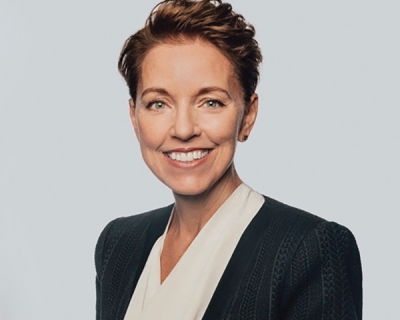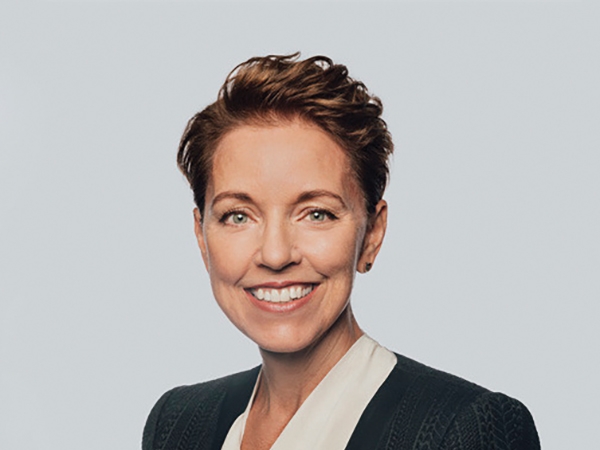
Wendy Dunnam Tita’s first chapter at Page was from 1995-2002. She then owned and operated her own firm for 11 years before returning to Page in 2013. Over the past decade, she has co-led the Commercial & Mixed-Use market sector from Page’s Austin office, designing award-winning buildings and interiors, and collaborating with talented artists and artisans to create meaningful spaces.
This month, Wendy steps into her new role as Chief Practice Officer, a position that blends her love for integrated design with a collaborative approach to elevating Page’s practice area expertise. This approach was born from her desire to create impactful designs and from her deep appreciation for the role architecture plays in shaping human experiences.
Architecture Meets Interiors
I went to the University of Texas at Austin initially as a business and art history major. My goal was to be a museum curator or gallery owner. My first art history class was a lecture on Japanese architecture – the Torii gates and Shinto temples. The combination of art and placemaking came together for me in an incredibly powerful way. That day, I walked across campus to the School of Architecture and applied immediately to change my major. That was the best decision I ever made.

My view of architecture and making evolved early in my career, from the form-based approach that was taught in architecture schools when I was at UT, to a more experiential approach. My first job in architecture was for a small firm in New York that did high-end residential. In the same day, I could be site planning and coordinating structural and consultants, or I could be designing the hinge on a cabinet or a custom light fixture. This job also laid the groundwork for my passion for complex problem-solving and non-residential work. I was the only person who wanted to work on commercial projects and was quickly handed the repositioning of multiple floors of a building in the Garment District. The intricate puzzle was exciting to me.
Once I left New York, I thought I was going to start a company designing and fabricating furniture. I explored building that business in Brooklyn, but I had a better network in Austin. After designing multiple commissions, I realized that I missed the architectural component of the spaces that housed that furniture. A friend of mine said Page was looking for someone interested in the integration of architecture and interiors, which felt like a great alignment.
Lessons in The Power of Collaboration

In the late ’90s, Page designed the Robert E. Johnson office building at 15th and Congress. The Rocky Mountain Institute had selected it to be part of a pilot program to advance sustainable design. As we worked on daylighting strategies, we realized we couldn't meet our energy goals and the lighting level standards set by the state of Texas. They were developed during the time of typewritten documents and were much higher than what we need for computers. After my impassioned explanation of the problem, the project manager empowered me to write a white paper outlining the case for an update to the standards. The task was daunting and felt larger than my experience and expertise warranted. A colleague in the engineering department was equally passionate, so we did our research and developed a convincing case based on improved health and ROI. The state of Texas adopted our recommendation (and updated the standards), and we were able to adopt them into our project. That felt incredible. I never would have thought to do that if we didn’t have that collaboration.
Another collaboration from a few years ago exemplifies this passion for integrated design thinking. On our Ruby Hotel project, there was an existing house on the site. In it, the owner found a letter in the closet with a scrapbook. It was handwritten with a beautiful fountain pen, and it started, ‘My dearest Ruby.’ We used this inspiration to build a story about Ruby. We ideated about who she was, creating a branding, graphics, architecture, and interiors narrative together as a team. It was like listening to great jazz with every instrument playing in concert, even though they each are doing very different things.
Reflecting on Place and Integrated Design for Impactful Solutions
As a longtime resident of Austin, I get daily joy from the green spaces, creeks (though often dry), and rivers. The buildings, the spaces in between, and the ways that we navigate them are the components of a great city. I look forward to this next chapter for Austin as we evolve and mature. I also appreciate the very different scale of making in Austin. We have a wonderful community of artists and makers, and I feel a responsibility that, as our city grows, we need to let that growth continue to reinforce and strengthen that community by incorporating their work into our projects.
I’ve lived in Austin for many years, but I’ve also lived in six countries. In Norway, we lived in this fantastic old farmhouse on the beach. It’s a space that I continue to come back to because of how it was integrated with the land and the farm communities. My husband's family is from Stockholm, and when we visit, I get to explore the work of one of my favorite architects, Gunnar Asplund. At the Woodland Cemetery crematorium, which is a UNESCO World Heritage Site, there's this incredibly human moment where, as someone’s being lowered through a catafalque, Asplund added patterned details to the floor for the family to focus on as their eyes lowered with their loved one. It offers a detail to contemplate or meditate on. That sensibility to human experience is modern and timeless. On the other side of the world, my family lived on the edges of villages in Africa and Indonesia when I was younger. This informed my lens about the responsible use of materials, trying to minimize waste, and thinking comprehensively.
At Page, I love our ability to work through complex problems with elegant solutions. I leave no stone unturned as I contemplate how to solve a client's goals. Those might be design goals, experience goals, or business goals. As an architect, it's not hard for me to have a broad view and to explore different ways to provide solutions to our clients. That's when it's the most fun – when we're in a room of thinkers. It's not that we just offer certain practice areas; it’s that we have these deep wells of expertise. Our practice areas can stand alone as independent areas of thought leadership, yet we are doing them in-house, together.



